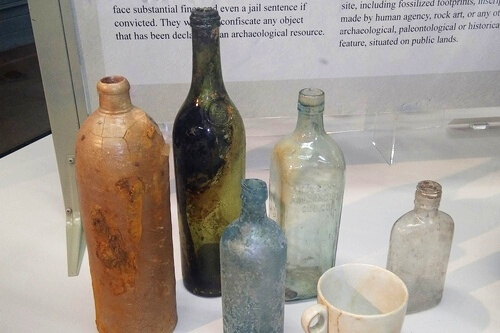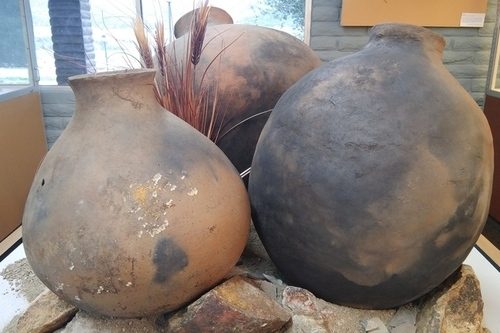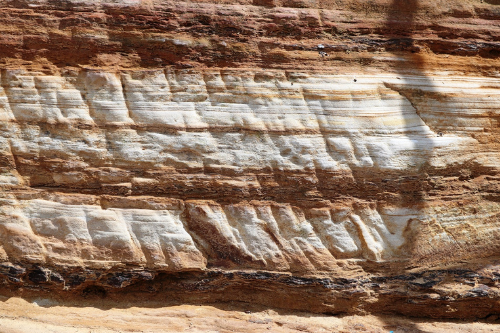
The Wonderful World of Historical Archaeology
The Wonderful World of… is a monthly blog focusing on some of the many themes, concepts, and sub-disciplines related to the fascinating world of Southern Californian archaeology.
What is Historical Archaeology?
Historical archaeology is a subfield of archaeology that uses written and oral records to contextualize cultural resources that may be found during an excavation. In North America, this type of archaeology focuses on the post-colonial contact period of time. Prehistoric cultural resources and societies generally do not have written documentation to inform found cultural materials so the methodology in practice is different.
Historical Archaeology in Southern California
Southern California has a relatively short post-colonial period and so the historic archaeological record is much smaller than that of the prehistoric sites found here. Generally, California historical archaeology covers the period in which the Spanish colonized the region from 1769 to 1821, Mexican Rancheros from 1821 to 1846, and then the American colonization from 1846 to present. Colonialism and the agricultural and industrial developments of the 19th and 20th centuries have shaped California into the modern place we know today. By using written historic records to contextualize the artifacts and features found during excavations, archaeologists can tell a more complete story about the people, places, things, and challenges past societies faced.
Historical Archaeology at the San Diego Archaeological Center
The San Diego Archaeological Center preserves thousands of historic archaeological artifacts. These artifacts are in varying conditions, but often they were discarded and buried over time. This can make it tricky to decipher what something is or was used for (especially if it is broken) but materials and markings help archaeologists to date and uncover artifact mysteries. Many times, historical archaeology provides a unique look into the past of peoples whom may not be well documented in the historic record. For example, minorities, women, and people of color were often left out of these records and therefore their place in society undocumented.
Block 112: The Untold Story of San Diego’s Working Class in the 1800s
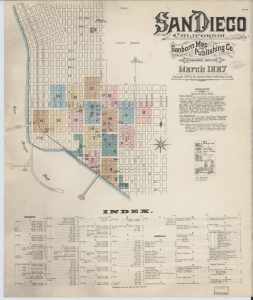
Currently on exhibit at the Center, Block 112: The Untold Story of San Diego’s Working Class in the 1800s is an exhibition that looks closer at this historic block in San Diego using historical archaeological methods. This small section of downtown San Diego provides a window into the lives of San Diego’s diverse, urban working-class peoples. The artifacts presented in this exhibition give an objective history of the lives and lifestyles of the people living here. Not only do excavations like these inform the historic narrative of San Diego’s working class, but it also helps to correct it.
Who Lived on Block 112?
Block 112 was located between J and Island streets and 6th and 7th streets in downtown San Diego. Using the 1888 Sanborn Map, it is known that there were two Chinese laundries and a drying yard, a wagon storage garage, horse corral, cigar factory, a general merchandise store, two restaurants, a shed for agricultural and hardware storage, and new store fronts under construction. There were 50 known residents living here. 16 of them were white or African American citizens and the other 34 were immigrants and ethnic minorities. By studying the documentation and material remains of the people living here at during this time period, we know that there were Chinese laundrymen, a Mexican mill hand, a French gunsmith, a Welsh musician, and more!
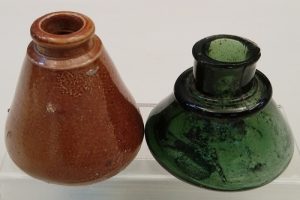
A sudden population boom in San Diego in the mid-1800s led to a densely packed urban environment seen in Block 112. Typical to inner-city living, many of the residents here were impoverished. By examining artifacts found here, we see that despite their poverty the inhabitants were doing more than just making a safe environment to thrive in – they were making a home.
Health and Medicine on Block 112
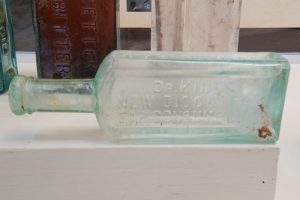
Before trash pickup was common practice, people would discard used items in privies (or trash pits) or even throw things away just outside of their homes. This allows for artifact recovery but was a real problem for the people living during this period. These densely populated areas created a lot of waste, and without a trash or sewer system, disease followed. The lack of infrastructure for the working class marginalized them even further. Block 112 did not receive a functioning sewer system until 1911, and this challenge is reflected in the large amount of medicine bottles found here. An interesting finding: both Chinese and American medicine bottles were recovered. This can lead us to conclude that all Block 112 residents were dealing with the effects of these conditions culturally, in their own ways.
Recreation and Leisure Time on Block 112
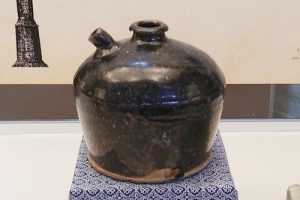
While life may have been challenging at times for the people living in Block 112, archaeologists can also infer that the people living here found time for recreational activities. Games and musical instruments were recovered, indicating that Block 112 residents had time for leisure. It can also be said that many of the immigrants living here retained ties to their own communities while assimilating to their new country.
Conclusion
San Diego’s cultural diversity is evident in the artifacts that were left behind. Chinese clay, Japanese porcelain, German and British tonic bottles and toiletries – historic archaeological excavations can reveal a lot about the daily life of past societies, and especially minorities, that the written historic record may be missing.
by Jessica McPheters, Collections Manager


